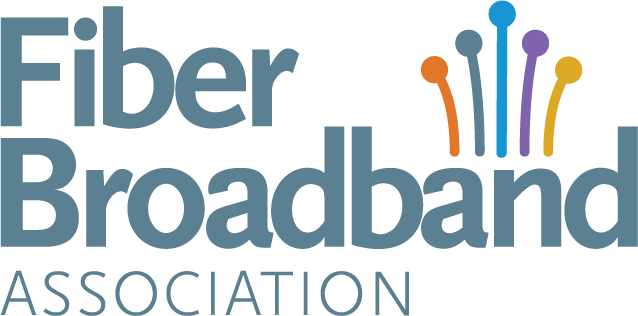Bridging Generations and Geography: How Fiber is Transforming Tribal Alaska
Bridging Generations and Geography: How Fiber is Transforming Tribal Alaska
Kristina Gary, CEO of Old Harbor Native Corporation (OHNC), shared the vision and impact behind Project NunaPet, a transformative broadband project set to connect remote Alaska Native communities across Kodiak Island. Drawing from a deep well of professional experience and cultural heritage, she highlighted how this ambitious undertaking goes far beyond infrastructure—it’s a bridge to sustainability, education, health, and cultural preservation for tribal communities.
Kristina Gary, who became OHNC’s CEO in early 2025, is a proud Alaska Native herself and shareholder in Bristol Bay Native Corporation. Raised in traditional fishing and gathering practices, her roots and values are tightly interwoven with the land and people she now serves. Prior to joining OHNC, she held senior roles in external affairs and infrastructure development across the state, including work on Alaska’s first subsea fiber cable project. That experience now informs her leadership of Project NunaPet.
Project NunaPet: A Lifeline in Fiber
Named for the native word “reflecting land and connection,” Project NunaPet is part of the National Telecommunications and Information Administration’s (NTIA) Tribal Broadband Connectivity Program. With $65 million in federal funding, the initiative aims to connect four Alaska Native villages—Chiniak, Old Harbor, Akhiok, and Karluk—serving around 570 homes and multiple public institutions, including the Pacific Spaceport Complex on the island.
Currently, these communities rely on microwave and satellite connectivity, both of which are unreliable and expensive. The new fiber optic network will begin in Homer on mainland Alaska, cross underwater to the Kodiak archipelago, and extend to the targeted villages. She noted that while the fiber laying process in Kodiak is less complex than in Arctic regions—where she once oversaw the heavily armored, ice-resistant subsea cables—design considerations still include fishing gear, anchor drag, and ship traffic. Directional drilling and nearshore trenching will be used to protect the cables as they land in village areas.
A Different Kind of Corporation
Kristina explained that Alaska Native corporations like OHNC are unlike public or private companies in the lower 48. Created under the 1971 Alaska Native Claims Settlement Act (ANCSA), these corporations were formed to manage land and economic resources for Alaska Native peoples after disputes over land ownership during the oil boom of the mid-20th century. Each Native shareholder—like herself—holds inherited, non-transferable shares that tie them to the land and community.
OHNC operates across a variety of sectors, including equipment leasing, vehicle rentals, and government contracting. Yet its core purpose remains to generate sustainable profits for the benefit of its Alaska Native shareholders and to reinvest in the community’s future.
Infrastructure with a Purpose
Project NunaPet is just one of several major infrastructure efforts underway in Old Harbor. She described how OHNC has already invested in:
- A hydroelectric project to reduce reliance on costly, polluting diesel fuel and provide clean, affordable energy.
- An airport expansion, critical in a region, accessible only by boat or plane.
- A community farm with greenhouses and an orchard, supporting local food production and nutrition.
- A thriving bison herd on Sitkalidak Island, aimed at ensuring food security and potentially expanding into commercial markets.
Each of these initiatives relies on a foundation of power, water, and increasing broadband connectivity. From remote sensor systems to digital agricultural monitoring and online education, true fiber broadband is a key enabler for modern tribal sustainability.
Preserving Culture Through Connectivity
Beyond economic development, Kristina emphasized how fiber access will help preserve and promote Alaska Native culture. Broadband enables tribal members—especially youth and those living far from home—to participate in digital storytelling, language revitalization, cultural workshops, and shareholder engagement. “It allows us to bring the world to Old Harbor—and to bring Old Harbor to the world,” she said.
Kristina also addressed the ongoing conversation about blood quantum requirements and shareholder eligibility, noting the importance of self-determination for Alaska Native entities. Issues like marine mammal harvesting rights and cultural identity recognition remain active topics in both state and federal policy discussions.
The High Cost of Connection—and Why It’s Worth It
With a build cost that might appear steep on a per-household basis, Kristina acknowledged that federal investment in Alaska’s broadband infrastructure is long overdue. “We became a state in 1959, and this is the first time we’re seeing investment on this scale,” she said. It’s not just about fiber—it’s about equity, health, education, and self-reliance for Indigenous communities that have long been underserved.
Fiber, she noted, offers a level of reliability and speed that satellite and microwave solutions simply can’t match—especially for applications like telehealth, online learning, and digital tribal governance.
Looking Ahead
As Kristina and the Old Harbor Native Corporation forge ahead with Project NunaPet and other community initiatives, the hope is that these efforts serve as models for tribal communities across Alaska and beyond.
Click here to listen to the full episode or find previous episodes of Fiber for Breakfast.
Click here to view the slides presented during today’s episode.




